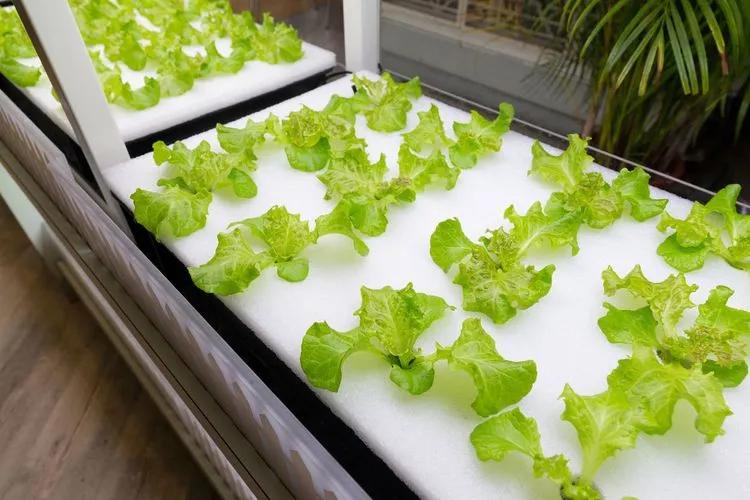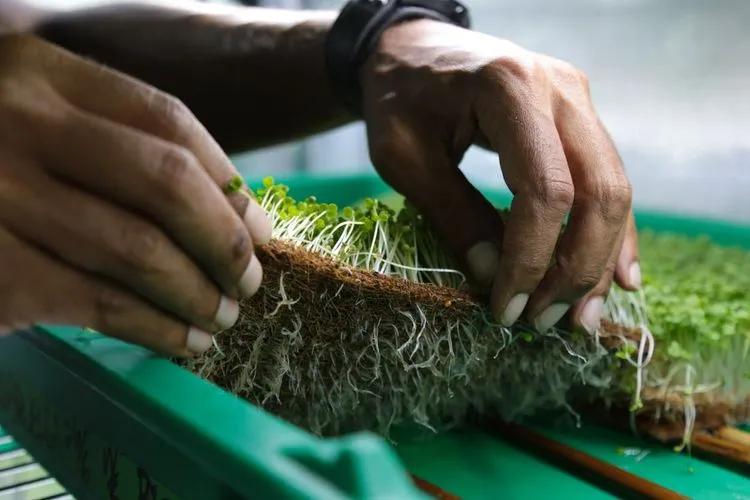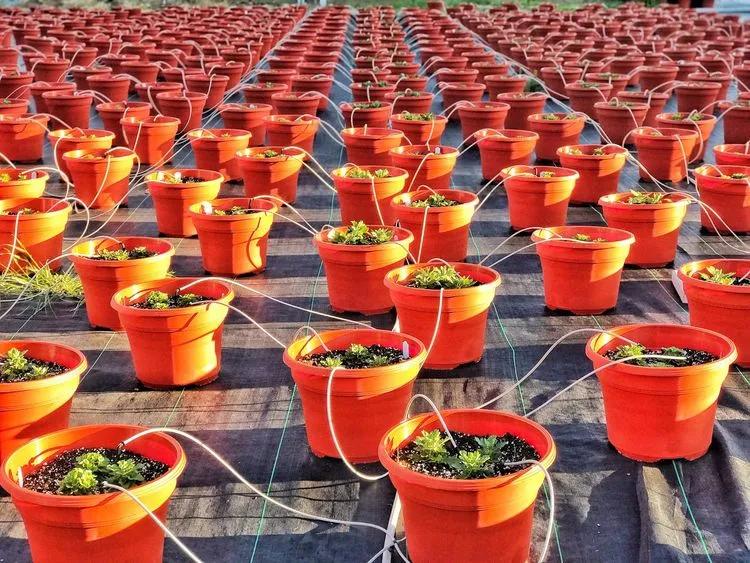Horizon hydroponic greatly facilitates the laborious process of caring for capricious crops. Interest in growing hydroponics is dictated by the increasing consumption of salad and the issue of global food security. Let's go deep into what's hydroponics.
What is Hydroponics?

Hydroponics is a system that helps grow plants without soil. It helps to solve the problem of a shortage of high-quality soil and the amount of space for planting. The system does not need a lot of space: plants can be placed in small areas.
How does hydroponics work?
The hydroponics method is based on the study of the plant's root system. The roots are immersed in solutions containing necessary nutrients. A working solution of mineral salts is prepared according to the needs of a particular plant so that the greenery grows without soil and with much less consumption of water.
What are the components of a hydroponic system?

The system includes a container with a nutrient fluid, on top of which a grate or foam with holes for seedlings is installed. The roots are lowered into the holes so that they touch the solutions. An air pump that provides oxygen for plant roots and a submersible pump moves nutrients from the reservoir to the roots.
Hydroponic Types
Deep water culture systems (DWC)
This type of hydroponics requires fixing the plant with a soft clamp on the upper part of the vessel or directly on a non-sinking tray. The roots should always be in a constantly aerated nutrient solution.
A deep water culture system is one of the simplest hydroponics available, so its main benefit is that you can try hydroponic gardening at home. Also, it is proven that water-loving crops can be successfully grown this way. Almost all marsh crops flourish in the DWS system. However, it is not suitable for vegetable crops and needs a large amount of solution because each plant has to have a separate reservoir. Another disadvantage is that it is essential that the temperature in such an installation exceeds 68˚F (20˚C) and does not fall below 60˚F (15.5˚C).
Nutrient Film Technique (NFT)
An external water pump creates a constant flow of solution through the plant roots. The solution increases its humidity in root space and saturates the liquid itself with oxygen without additional aeration with a compressor.
Low intake is a significant advantage of this method. Usually, no other medium is used other than air, saving on changing the medium after each harvest. With NFT, plant roots can maintain an even pH and conductivity through regular feeding. However, if the supply of nutrient solution is interrupted, the roots dry out very quickly and the growing tray might become blocked by roots of vigorous-growing plants.
Drip Systems
The drip irrigation system is one of the hydroponic methods based on the supply of nutrient solutions through a network of thin capillaries. The technology is the same as in traditional farming: excess water flows into a reservoir. The droplet release rate is adjustable. The circulation is controlled by a timer and turns on at different times throughout the day, depending on the plant's needs.
Drip systems are reliable and easy to operate. To some extent, the environment protects the roots from sudden changes in temperature and humidity. Drip systems have one drawback though. The substrates are used to retain a large amount of water, and the water inappropriately vanishes. As a result, root rot sinuses are formed, which are often found with drip irrigation.
Flood and Drain Systems (Ebb & Flow)
First, the substrate is flooded with a nutrient solution; then, the solution is drained. When the solution drains from the surface of the substrate, it is accompanied by ventilation, which brings fresh air to the root zone. Flooding systems are rarely used on an industrial scale, but they are very relevant for home hydroponic farming.
Using this method, the root system is well saturated with a nutrient solution. As a result, the plants develop rapidly and bring a bountiful harvest. But be careful: it is crucial to find the optimal irrigation cycle because it can differ depending on the season (even indoors!) and the size of the plants.
Aeroponic
The aeroponic system grows plants in the air without using soil or substrates. The nutrients are delivered to the roots in the form of an aerosol. Aeroponics provides an abundant supply of oxygen, the level of which any other type of hydroponic system is unable to provide.
With aeroponic technology, there is a significant saving of water, fertilizers, and the risks of crop loss are minimized. At the same time, installing aeroponics is quite a complex process which requires the purchase of special equipment and instruments.
Wick System
An ordinary wick is placed in the reservoir with the nutrient solution and the substrate located above. As a result, the liquid independently flows to the peri-root zone of the plant, providing the roots with everything they need.
This system is one of the most affordable and simplest. All you need is a container for the nutrient solution and a substrate. However, plants will not develop as rapidly as in other systems due to the passive way of delivering nutrients.
What Are the Advantages of Hydroponics?
Elimination of influence of environment. Hydroponic cultivation is free of weeds, which under normal conditions are a lot of hassle. Insects and rodents cannot get to the harvest.
The plant does not accumulate toxic elements. When using the hydroponic method, plants receive only helpful substances. No excess nitrates, radionuclides, and heavy metals!
The benefits of hydroponics are that this kind of cultivation helps you control the process of growing and obtaining the necessary substances, which reduces the risk of plant diseases and increases their vitality.
What Are the Disadvantages of Hydroponics?

Initially, the cost of such a system will be significantly higher than the purchase of conventional soil.
Some farmers are hesitant to apply the new technology due to adding chemicals to the nutrient solution.
You need to invest a little work to assemble the system yourself. It will take a lot of time and effort.
FAQ
Do hydroponic plants taste different?
The simple answer is YES. Often the hydroponic plants have better taste than the ones farmed naturally. You can find it out trying hydroponic farming at home.
Is hydroponic farming sustainable?
Hydroponics is considered to be more sustainable as it uses almost 90% less water than during conventional cultivation.
